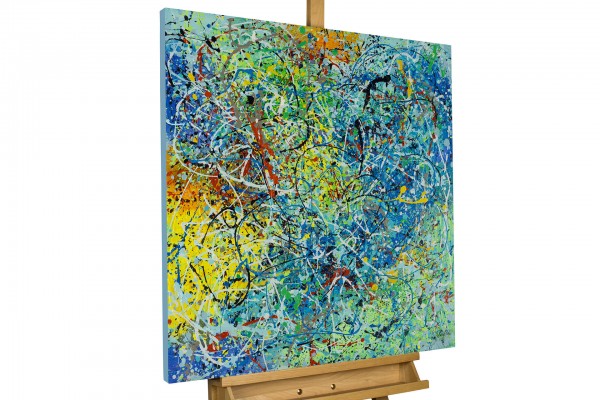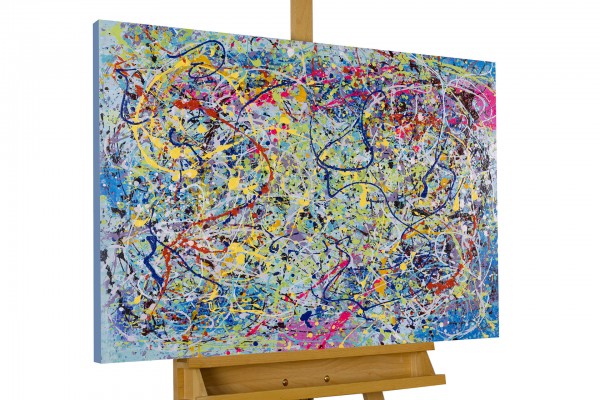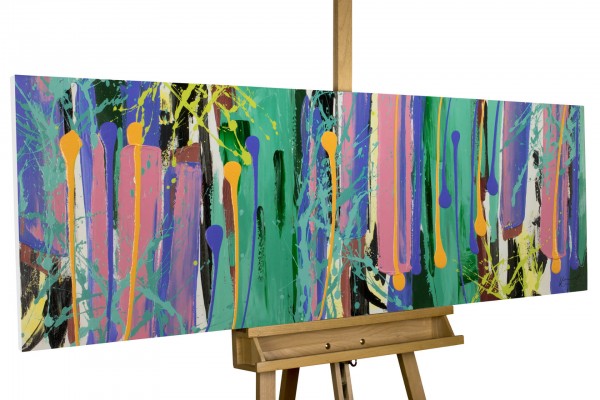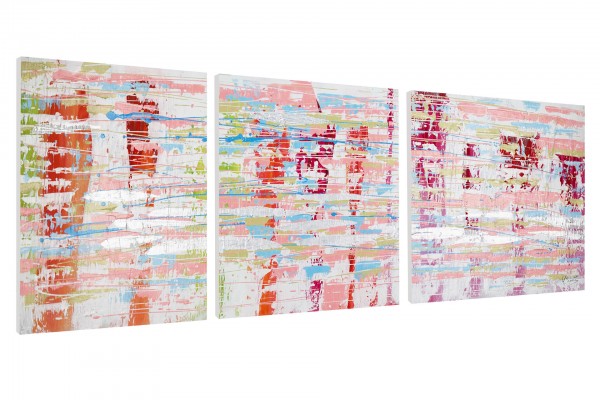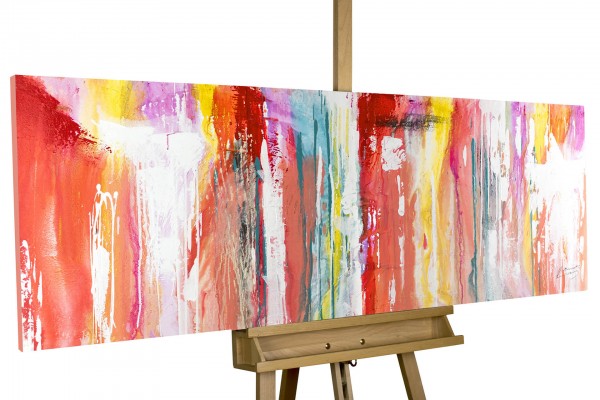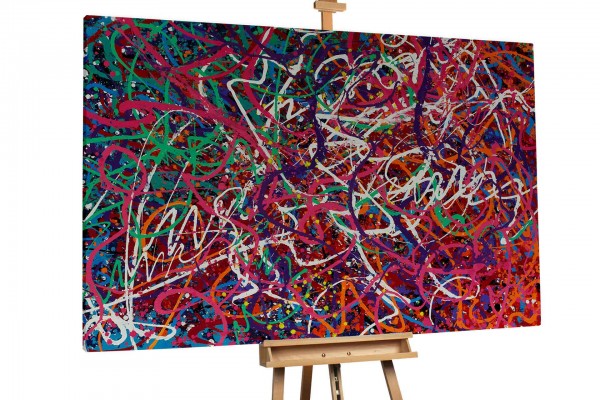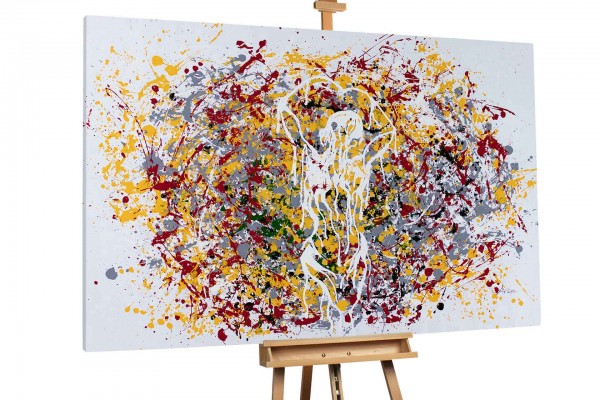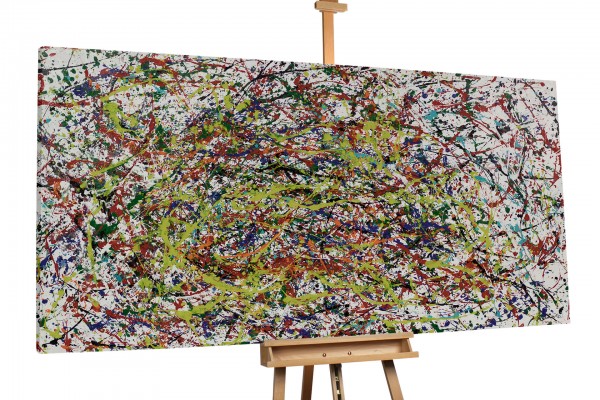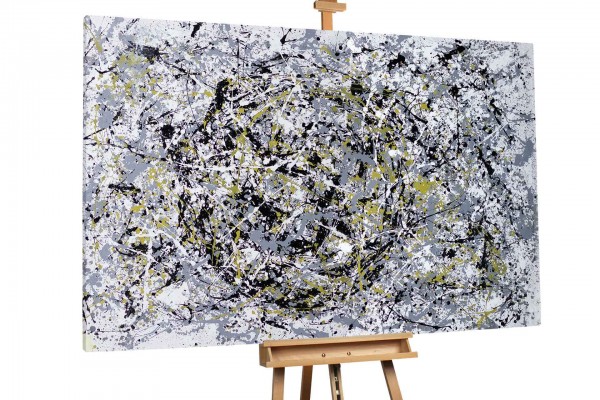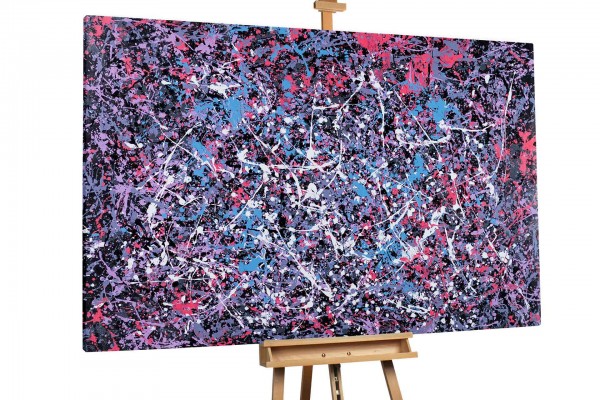Portrait of an Artist: Jackson Pollock

Radical, unique and revolutionary – these are the words that best describe the work of American artist Jackson Pollock. He is regarded as the founder of abstract expressionism and created a new painting technique with his drip paintings, which made his paintings inimitable.
Life
Paul Jackson Pollock was born in 1912 in Cody, Wyoming, the youngest of five sons. His childhood was marked by frequent moves between California and Arizona and his parents’ unhappy relationships.
After an unsuccessful attempt at a military career, the young man entered the Los Angeles School of Applied Arts in 1928, where he studied abstraction and the occult. Jackson did not last long at the school, being expelled for alcohol abuse and inappropriate behaviour.
In 1930, Jackson Pollock followed his older brother Charles to New York, where they both studied at the Art Students League. There he visited museums, particularly the Metropolitan Museum and the Museum of Modern Art. Inspired by Pablo Picasso, the Mexican muralist Diego Rivera, the Surrealists such as Joan Miró, Native American pictographic art and the Old Masters such as Michelangelo, Peter Paul Rubens and El Greco, he worked in many directions and soon mastered the power of line and abstract form. However, with his tendency towards depression and excessive drinking, New York City became a dangerous and tempting environment for him.
In 1942, the artist Lee Krasner became interested in Pollock’s paintings at one of his exhibitions. She visited the painter’s studio to familiarise herself with the works and their creator. Three years later, in October 1945, Jackson and Lee married and settled in Springs, on the outskirts of East Hampton. They bought a wooden house with a barn where Pollock set up a studio. Lee, who thought Jackson was a brilliant master, worked hard to promote his career, applying for exhibitions and meeting collectors. It was she who introduced Pollock to Peggy Guggenheim, founder of the famous Museum of Modern Art, who organised the American Expressionist’s first solo exhibition.
Work
In 1947, Jackson Pollock unveiled his famous Drip Paintings, some of the most original works of the century, which changed American art forever. For Jackson Pollock’s “Action Painting”, most of his canvases were placed either on the floor or on the wall, rather than being fixed to an easel: “My painting is not done on the easel. I need the resistance of a hard surface. I feel more comfortable on the floor, I feel closer to it, more a part of the painting”. From then on Pollock used a method of letting the paint drip out of the can. This way of letting the paint drip earned him the name “Jack the Dripper”. Instead of using the traditional brush, he added depth to his paintings with knives, sticks and even syringes.
Pollock began using this technique in Siqueiros’s workshop in 1936. Almost ten years later it became his main method of painting. This form of painting was similar to the Surrealist movement in that it directly related to the artist’s emotions, expression and mood, expressing the feeling behind the works he created.
Critics were divided over his work. His admirers found the new form of art captivating and fascinating. His critics described his paintings as chaotic and meaningless. He attracted a great deal of attention through numerous art exhibitions. In August 1949, Life magazine introduced his work to the public and made him one of the leading painters of his time.
Pollock’s rise to fame coincided with almost two years of abstinence from alcohol. It was during this period that he painted some of his best work. In his farmhouse, he created paintings by circling the canvas and dripping paint instinctively, without much thought. He described his style as “direct painting” and explained that it was similar to Indian sand painting. His style was controversial at the time and remains so today, with many different interpretations. This is the main reason why his art is still admired by the public, even though the public’s taste in art has changed over time. Although his work was widely known and exhibited internationally, the artist never travelled outside the United States.
New style of painting
In 1951 Pollock changed his style again when he began to paint abstract forms of people and animals. He also began to use mainly black paint instead of the variety of colours in his earlier paintings. This can be seen in his painting Number 7 (1951). These paintings became known as his “Black Pourings”. Pollock later moved to a commercial gallery and returned to the use of colour and figurative elements.
In the 1960s, Jackson Pollock was considered one of the most important figures in the art world and one of the pioneers of the avant-garde. He continued to suffer from alcoholism to the end of his life.
His career came to a tragic end at the age of 44 when he and his lover Ruth Kligman were killed in a car accident in New York in 1956.
Discover artworks inspired by Jackson Pollock
Other artists in focus:
Picture credits: © Silvio – Adobe Stock; © rolffimages – Adobe Stock


